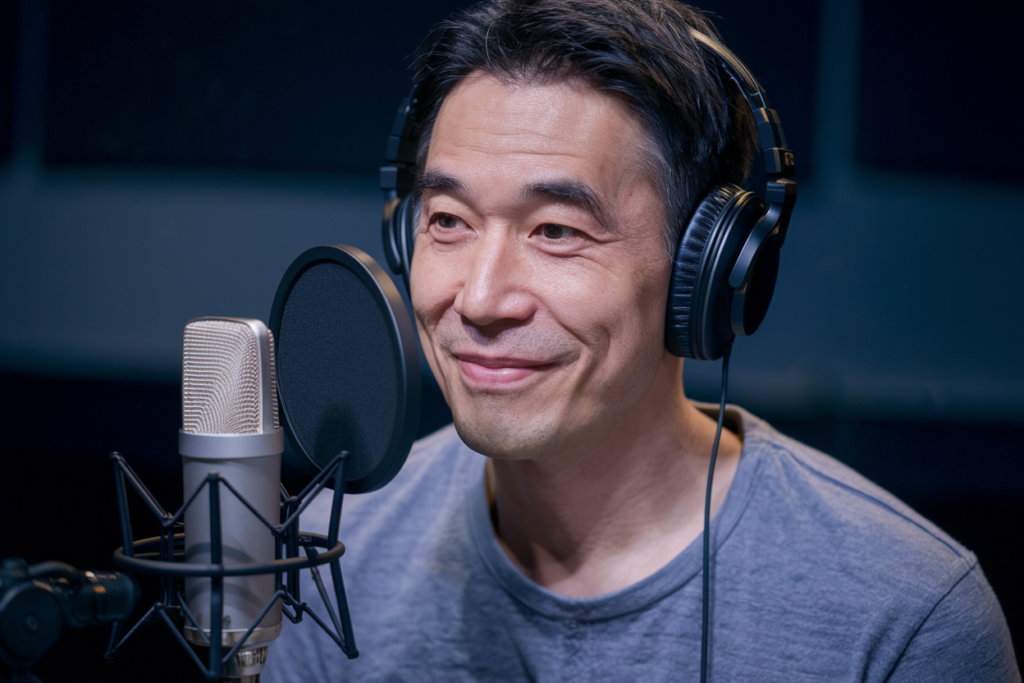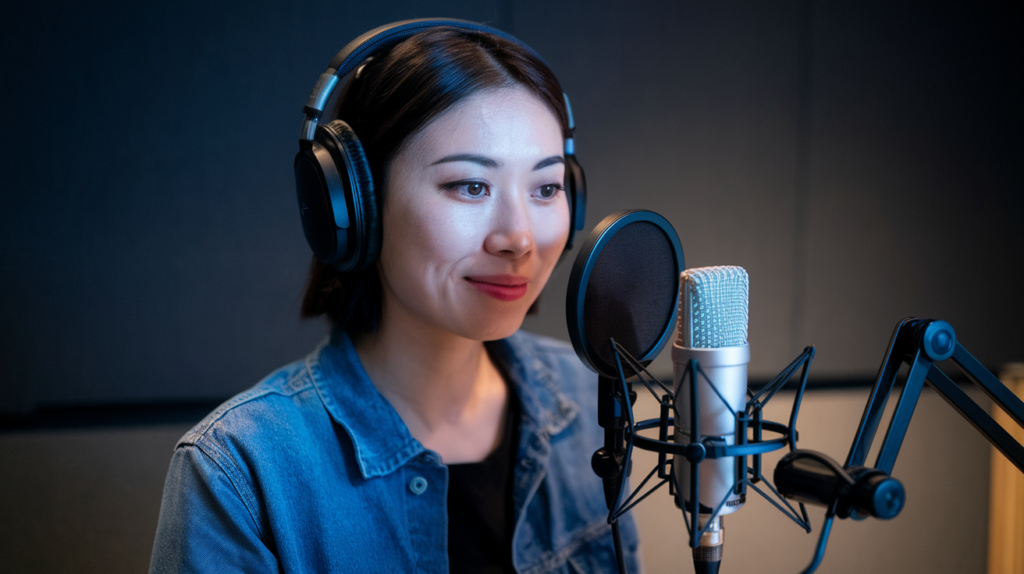Key Takeaways
- Understanding Regional Variations: Japanese accents, or “hōgen,” significantly differ by region, impacting character portrayal and audience connection in media projects.
- Accent Influence on Storytelling: The right accent enhances character authenticity, shapes audience perception, and sets the emotional tone for stories across various media formats.
- Audience Consideration: Tailor your accent choice based on your target audience—local viewers may resonate more with regional dialects while global audiences might prefer the Tokyo Dialect.
- Content-Specific Accents: Different types of content (anime, video games) require distinct accents to accurately reflect characters’ backgrounds and enhance narrative immersion.
- Authenticity in Voice Performance: Selecting voice actors skilled in specific dialects is crucial for delivering authentic performances that engage viewers effectively.
- Resources for Accent Mastery: Utilize online courses, language exchange communities, and multimedia resources to train in Japanese accents and ensure genuine portrayals.
Ever wondered how the right Japanese accent can elevate your media project? Whether you’re creating an anime, video game, or film, choosing the perfect accent is crucial for authenticity and audience connection. With so many regional variations in Japan, it’s easy to feel overwhelmed.
Understanding Japanese Accents
Japanese accents vary significantly across regions, impacting the way characters sound in media. Choosing the right accent enhances authenticity and connects with audiences on a deeper level.
Overview of Japanese Language Varieties
Japan features numerous dialects, known as “hōgen.” Key varieties include:
- Tokyo Dialect: Often considered the standard, it’s widely understood across Japan.
- Kansai Dialect: Spoken in places like Osaka and Kyoto, it has a unique intonation and is often perceived as friendly or humorous.
- Hokkaido Dialect: Contains influences from indigenous Ainu language and varies from standard Japanese.
- Okinawan Dialect: Distinct from mainland dialects, it showcases unique vocabulary and pronunciation.
Each variety brings character depth through voiceover performances. For instance, a voice actor using Kansai accent can evoke warmth or humor, while Tokyo’s standard might convey professionalism.
Importance of Accent in Media
Accent choice plays a crucial role in storytelling. It shapes character perception, adds realism, and can set the emotional tone.
Utilizing regional accents enhances your project’s authenticity by reflecting diverse cultural backgrounds. A skilled voice artist understands these nuances and can adjust their performance to match specific accents effectively.
When selecting voice talent for your project, consider how accents resonate with your audience. Authenticity fosters connection; viewers relate better to characters who sound familiar. Plus, well-executed accents enrich narratives by creating believable worlds.
Incorporating the right accent not only elevates quality but also strengthens engagement with your content. Emphasizing regional variety makes stories relatable and memorable for listeners worldwide.
Factors to Consider in Choosing an Accent
Choosing the right accent is key for your media project. It influences how characters resonate with your audience and shapes their overall experience.
Target Audience
Understanding your target audience significantly impacts accent selection. Are you aiming for local viewers or a global audience? If your content targets Japanese audiences, consider using regional accents that align with cultural expectations. For example, the Tokyo Dialect may appeal to urban viewers, while the Kansai Dialect might connect better with those from western Japan. Engaging a voice artist who understands these nuances ensures authenticity and strengthens viewer connection.
Content Type
The type of content also dictates accent choice. In anime, characters may require distinct regional flavors to reflect personality traits and backgrounds accurately. For video games, immersive storytelling benefits from diverse accents that enhance character depth and realism. Selecting a voice actor skilled in various dialects adds richness to dialogues and can transform simple interactions into memorable experiences. A well-chosen accent elevates narrative quality and captivates audiences effectively across different media forms.
Popular Japanese Accents in Media
Choosing the right Japanese accent significantly impacts your media project. Understanding the various accents enhances character authenticity, making stories more relatable and engaging for audiences.
Tokyo Accent
The Tokyo Accent, often regarded as the standard dialect, is widely recognized across Japan. This accent features a clear enunciation and neutral tone, making it suitable for diverse media types. Characters using this accent resonate well with urban viewers who appreciate its familiarity. Voice actors skilled in this accent can convey emotions effectively while maintaining clarity, which is vital in anime and video games where dialogue drives narratives.
Kansai Accent
The Kansai Accent stands out with its friendly intonation and unique expressions. Known for its warmth and humor, this dialect adds a distinct flavor to characters from western Japan. Using the Kansai Accent can evoke feelings of approachability and charm, enhancing comedic moments or light-hearted scenes. Voice artists proficient in this accent bring characters to life by capturing their lively essence, helping audiences connect on a deeper level.
Other Regional Accents
Japan boasts a rich tapestry of regional accents that each offer something special to your project:
- Hokkaido Accent: Influenced by the Ainu language, this accent provides an intriguing backdrop for characters hailing from northern regions.
- Okinawan Accent: With unique vocabulary and melodic tones, Okinawan voices add cultural depth to projects set in southern islands.
- Tohoku Accent: Characterized by its distinctive pitch variations, it evokes rural themes that can enhance storytelling authenticity.
When incorporating these accents into your media projects, consider how each one shapes character perception. Engaging voice actors who specialize in various regional accents enriches narratives while creating memorable experiences for your audience.
Tips for Implementing the Chosen Accent
Implementing the right Japanese accent in your media project elevates authenticity and audience engagement. Consider these key areas when bringing your chosen accent to life.
Authenticity in Performance
Authenticity is essential. A voice actor’s ability to embody a character relies on their skill in adopting the regional nuances of the chosen accent. Listen closely to native speakers or watch media featuring that dialect. This practice helps you grasp unique sounds, rhythms, and intonations specific to each region. When selecting voice talent, prioritize those with experience in that particular dialect. Their familiarity ensures a more genuine portrayal, resonating better with audiences who recognize those subtle details.
Resources for Accent Training
Many resources can support your quest for accent mastery. Online platforms offer courses focused on various Japanese accents, allowing you or your voice artist to learn at your own pace. Additionally, engaging with language exchange communities provides opportunities to practice speaking with native speakers directly. You might also find valuable insights from podcasts or videos dedicated to Japanese pronunciation and dialects—these mediums often showcase real-life examples that enhance learning.
By prioritizing authenticity and utilizing available resources effectively, you’ll create richer narratives that draw audiences into the world you’ve crafted while ensuring memorable performances from your selected voice talent.
Conclusion
Selecting the right Japanese accent for your media project is a vital step in creating an authentic and engaging experience. By understanding the nuances of various regional accents you can enrich your storytelling and deepen audience connections.
Consider your target audience and content type as these factors will guide your choice. Whether you opt for the Tokyo Dialect’s neutrality or the Kansai Dialect’s warmth make sure to work with skilled voice actors who can embody these characteristics authentically.
Ultimately it’s about crafting narratives that resonate on a personal level. Prioritizing authenticity will not only elevate your project but also leave a lasting impression on viewers, ensuring they connect meaningfully with your characters and stories.
Frequently Asked Questions
What is the significance of selecting the right Japanese accent for media projects?
Choosing the appropriate Japanese accent enhances authenticity and strengthens audience engagement. It helps convey character emotions, cultural backgrounds, and improves relatability, making narratives more compelling and believable.
What are some key Japanese dialects mentioned in the article?
The article highlights several key dialects: the Tokyo Dialect (standard), Kansai Dialect (friendly intonation), Hokkaido Dialect (Ainu influence), and Okinawan Dialect (unique vocabulary). Each adds distinct qualities to character portrayals.
How do regional accents affect storytelling in media?
Regional accents shape how audiences perceive characters, adding depth and realism. They reflect diverse cultural backgrounds, allowing viewers to connect emotionally with characters through authentic performances.
What factors should be considered when choosing an accent for a project?
Key factors include the target audience—local or global—and the type of content, such as anime or video games. These elements significantly influence which accent will resonate best with viewers.
How can voice actors effectively implement chosen accents?
Voice actors should prioritize authenticity by studying native speakers and practicing their chosen dialect. Engaging experienced talent familiar with specific accents ensures quality performances that enhance storytelling.
Why is it important to engage specialized voice actors for different dialects?
Specialized voice actors bring expertise in regional nuances, enriching character depth and creating memorable experiences. Their understanding of specific accents elevates authenticity in media projects, captivating audiences effectively.
What resources can help voice artists master a Japanese accent?
Resources include online courses focused on language skills and pronunciation as well as language exchange communities where artists can practice speaking with native speakers to improve their accent accuracy.







